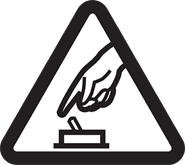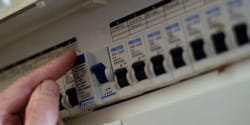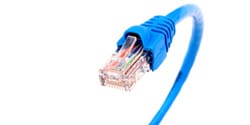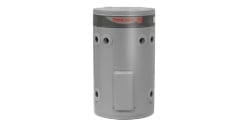What is a Safety Switch?
You have likely heard the term ‘safety switch’ before, but most people just take them for granted until an issue arises. A safety switch is, in essence, a monitor – it monitors circuits and the flow of electricity that is running through them. If a safety switch detects that the current is leaking somewhere, it can turn the power off almost instantly to avoid electric shock or injury to a person.


People often get safety switches confused with circuit breakers and fuses, but they are all tasked to complete different things. Circuit breakers and fuses are designed to protect your appliances or circuit wiring by cutting power when there is a fault or overloading of the system. Safety switches on the other hand are designed to protect people from electrical hazards and remember, circuit breakers and safety switches look alike, however safety switches have a test button. They all serve varying purposes and are important components to ensuring your home or business remains hazard-free .
What’s the difference between an RCD and a safety switch?
An RCD, otherwise known as a residual current device, and a safety switch complete the same job – protecting people from electric shock. Therefore, either one can be installed on your circuitry for electrical safety.
Are safety switches compulsory in NSW?
As some of you may (or may not) be aware, the Australian Standards which apply to electrical installations are called Australia/New Zealand Wiring Rules 3000:2018 and they were updated recently. As of 1 January 2019, a series of amendments came into affect to take into account the advances in technology, equipment and techniques that have occurred over the last 10 years (that’s when it was last updated!). Now, a lot of the changes aren’t applicable to normal homeowners but there are some new requirements relating to safety switches that you should be aware of:
- Safety switches or RCDs must be installed on final sub-circuits in all residential and domestic installations
- Safety switches or RCDs must be installed on final sub-circuits when replacing switchboards or when any other electrical modification works are being completed
- All circuits in new homes must have a safety switch
Up until the amendments to the standards, safety switches were only recommended in NSW, as opposed to other states which had more stringent requirements. Now, any adjustments to circuits that supply power must include the addition of a safety switch or RCD. So, in short, yes safety switches are compulsory in residential and domestic homes in NSW.
Is one safety switch enough?
One safety switch is definitely better than none, however that may not be enough to protect your household or office from electrical hazards. Keep in mind that a safety switch only protects you if it is on the particular circuit that is malfunctioning – if you have a safety switch installed on one circuit, and another has a leaking current, you are unprotected. Is it therefore highly recommended you have RCDs or safety switches installed on every circuit (this includes hot water, ovens ,air conditioning and even pool equipment – everything that has an electrical circuit!).
If you would like to know more about safety switches and your home, give us a call today on 1300 911 307 or complete our online contact form.
Your Local Electricians
We provide electrical services in North Shore, Northern Beaches, Eastern Suburbs, Hills District and Ryde.



